-
Administrator

Article: Pete Geoghegan's Mustang GTA
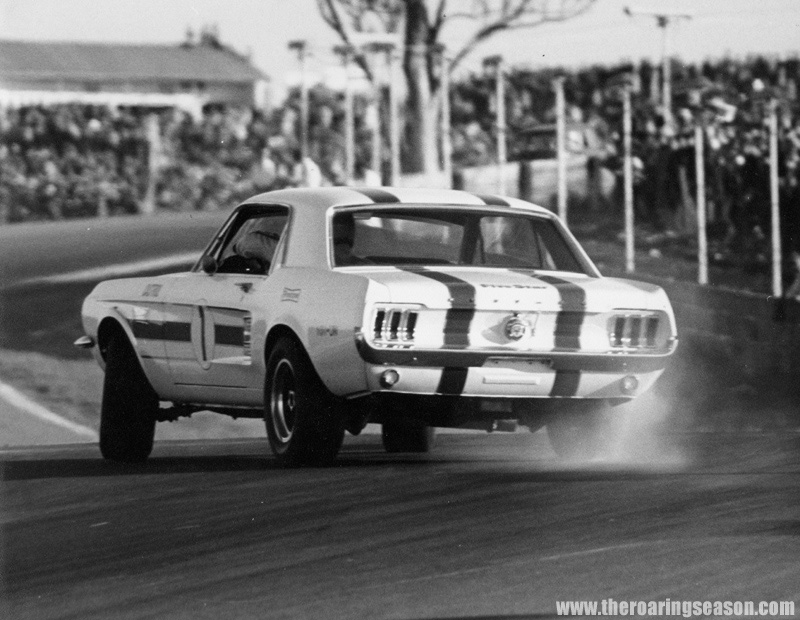
If silverware dictated the value of a race car, this would be the most valuable touring car in Australia. It has a race history that is unmatched. It raced in front-line competition for five years, scoring an impressive 89 wins from 144 race starts. Although not quite achieving the start/win record of Allan Moffatís incredible 1969 Kar-Kraft built Mustang fastback, which notched up 101 wins from 151 starts, itís the significance of the races the Geoghegan machine that makes the difference.
This car carried Ian ĎPeteí Geoghegan to three of his five Australian Touring Car Championship titles. Until Dick Johnson clocked up his fifth ATCC title in 1989, Geoghegan was the only person ever to have achieved this. This Mustang is the only car to have won three ATCC titles. The first of these was on its race debut, in 1967. Itís also the only car to have won ATCC titles in both the original one-race format, and multi-race championship. At a time when rules were being constantly tweaked, this car continued to evolve, to stay ahead of the pack. It also took on, and beat, not only locally built Australian, American, German, and British race cars, but also American factory racers.
Geoghegan had this car built by John Sheppard in 1967 to replace his 1965 Mustang, itself also a hugely successful racer which had snared him his second ATCC title in 1966. In an interesting role reversal to that of the previous year, Geoghegan entered the 1967 ATCC race with his new Mustang totally untested, as a newly completed car, just as his arch-rival Norm Beechey had done so the year before. In 1966, Beechey entered the ATCC race, held at the punishing Mount Panorama circuit in Bathurst, with his brand new Chevy Nova (Nova II). The big Nova, which was forced by the Confederation for Australian Motor Sports (CAMS) to be fitted with four-wheel drum brakes, made its debut in this race, and on this most daunting of circuits, as Beechey felt the larger 327ci engine displacement would give him an advantage over the Mustangís smaller 289. And if the race was only 13 laps long, he would probably be the 1966 Australian Touring Car Champion. But it wasnít, it was 20 laps. He was right about the extra grunt, he pulled out a healthy second buffer on Geoghegan, until he ran out of brakes, and the Mustang swooped through to take victory.
That 1966 ATCC victory was typical Geoghegan; well prepared, and fully in control. He sat back and let Beechey go, waited for the big Chevy to run out of stoppers, then applied the pressure, nailing in fast laps, and moving through to take the win.
-
Administrator

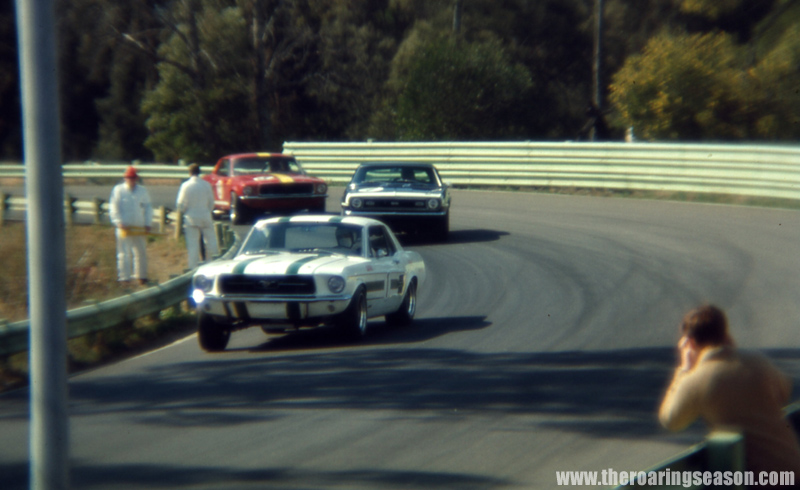
And so, when Geoghegan fronted at Lakeside on July 30, 1967, with his shiny new, and untested ’67 GTA coupe which had not yet turned a wheel, Beechey must have felt the title was in the bag. Geoghegan’s old car, the Mustang that had carried him to so many victories, had been sold to New Zealander Rod Coppins. The new GTA looked a million bucks, but it was something of an unknown quantity, and now it was Beechey, with a full 12 months of hard racing under his belt in the Nova, who went in as favourite. Furthermore, there were the additional challengers from Bob Jane’s new ’67 Mustang coupe, the similar car of Greg Cusack, and the two Kiwi Mustang’s of Paul Fahey, and Rod Coppins; Coppins in the ex-Geoghegan car, which ‘big Pete’ was still racing just a few weeks prior. Cusack’s Mustang was a Shelby built A Sedan car, straight out of the US. Then there were the rapid Mini Coopers of Brian Foley and Peter Manton, and Jim McKeown’s Lotus Cortina, plus Terry Allan’s big block Camaro, and Kevin Bartlett’s Alfa GTA. It was a star-studded cast, but, essentially, it was Beechey’s race to lose.
The GTA coupe was not Geoghegan’s first choice to replace his ’65 model. The family car dealership, Geoghegan’s Sporty Cars, led by Pete and brother Leo’s father Tom, had bought two brand new Mustangs into Australia in April 1967; the GTA, and a 4-speed manual fastback. And it was intended that the fastback become the new race car, while the GTA coupe (the GTA was a model produced only in 1967, the designation being ‘GT Automatic’) would be sold by the dealership as a standard road car. However, CAMS refused to approve the fastback for racing, therefore, many of the GTA’s mechanical components were switched, the fastback was sold, and the GTA retained to become the new race car. The CAMS decision was said to be made based off the seating dimensions, which, oddly enough, were the same as the coupe. But CAMS considered the fastback to be a sports car, as it was also in the US. In the SCCA Trans-Am sedan series, only the coupes were eligible, until the 1969 season.
Pete’s hugely successful ’65 Mustang had been built and maintained full-time by John Sheppard, and it was Sheppard who was also tasked with converting the new GTA into a race car. Unlike the ’65 Mustang, which was propelled by a 289ci motor supplied by Shelby American in the US, for the new car, Sheppard instead chose to build the power unit himself. Based on the standard 2-bolt main bearing block, Sheppard constructed a wet-sump motor featuring a factory crank, Crower roller-cam, ported and polished heads worked over by Merv Waggott, and four 48-IDA downdraft Webers. The unit produced around 400hp, the going rate at the time for a 289ci Ford race motor. A Ford top-loader backed the 289, with a Ford 9-inch and Detroit Locker rear end. Waggott supplied the ventilated front disc brakes, with Kelsey-Hayes callipers doing the clamping, while in the rear were 10” diameter drums; the Improved Production rules at the time required the brake type to remain standard.
To squeeze the chunky 15” x 8” American Racing Wheels and fat Firestone rubber inside the standard wheel arches, Sheppard shorted the top A-arms slightly, which also produced the required dose of negative camber.
-
Administrator

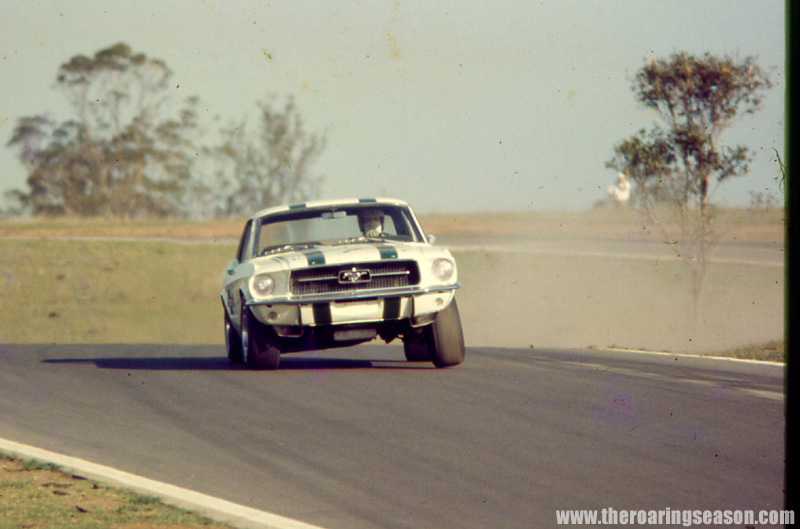
Geoghegan’s new Mustang was so late in arriving at Lakeside, it wasn’t even sighted at the track until just a few hours before race start. Beechey had already punched out an impressive 63.4sec lap in practice, and his nearest rivals appeared to be Foley and Manton, who were buzzing around quickly in their ‘bricks’. Geoghegan’s new Mustang finally turned a wheel in anger for the first time, and immediately the big guy was lapping in just under 64sec. Much like the format used in the 1964 ATCC, which was also held at Lakeside, the grid layout for the ATCC race would be based on lap times achieved in three preliminary races, each based on engine capacity/class. Beechey again knocked out another 63.4sec lap time, to gain pole, while Geoghegan achieved an impressive 63.6, to line up alongside the big black Chevy.
The ATCC race was held over 50 laps. Interestingly, Beechey opted for a set of soft Goodyear tyres, while most of those around him, including Geoghegan, chose a harder option. From the drop of the flag, Beechey immediately stormed into the lead, while Geoghegan dropped in behind, followed by McKeown, Foley, Cusack, Bartlett, Manton, Fahey, Jane, and Terry Allan. The big Chevy charged across the stripe for the first time already clear of Geoghegan by 1sec, while Cusack quickly disposed of Foley and McKeown to move up to third. Jane’s race was over on lap 2, as his Mustang jammed in second gear.
Beechey was charging away at the front, setting a new touring car lap record on the third tour, powering around in 63.3sec, which was even faster than his qualifying time, although he soon began to suffer from clutch problems, but continued to pull away. Geoghegan, in second, was running around on his own, while Cusack, McKeown, Foley, and Manton formed a furious gaggle that fought over third.
By lap 17, Beechey held a 10 second gap over Geoghegan, and looked to have everything under control. Cusack began to drift back, as did McKeown, while Bartlett began to surge forward. After 25 laps, both Fahey and Allan had retired, while Beechey continued to control the race, and appeared heading for his second ATCC title. But then, with ten laps remaining, the left rear tyre suddenly blew out on the Chevy, and slid at speed into the Armco, badly crumpling the left front corner, and he was out on the spot. Geoghegan cruised by, then buzzed in another ten laps, and took his third ATCC, in his brand new, untested car.
Over the following months, Sheppard got the new Mustang fully dialled in, before leaving the Geoghegan team to go work for Ron Hodgson, in early 1968. His place was taken by Mick Lambert. Geoghegan became a force to be reckoned with, and one Beechey in the Nova found himself chasing, more often than not. Meanwhile, hard-charging single-seater and sports car driver Niel Allen had taken over the Cusack Mustang, and became an immediate thorn in the sides of Geoghegan and Beechey.
-
Administrator

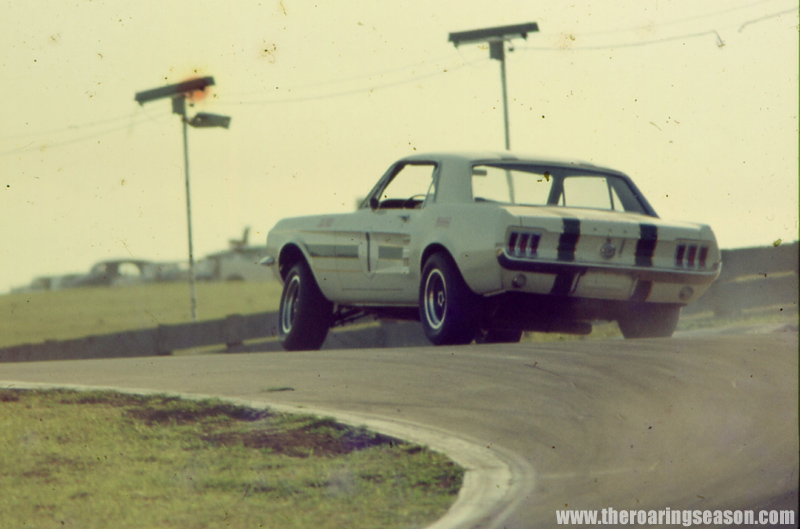
The 1968 ATCC was to be held at Warwick Farm, on September 8, 1968. With Allen really pushing hard in the Mustang, Jane having further developed his own Mustang, Geoghegan fully up to speed with his, and with rumours abounding that Beechey had headed to the US to purchase a Camaro, the ’68 ATCC was shaping up to be the best yet. McKeown had a new MkII Lotus Cortina now up and running, and Foley and Manton were matching the V8’s at many tracks. Meanwhile, the boss of Porsche Distributions Australia, Alan Hamilton, was armed with a new Porsche 911TR.
The new Beechey Camaro first appeared at Warwick Farm in late July, against an impressive line-up, in which Foley and Allen shared the front row with Geoghegan, while the impressive new Camaro sat on row two, next to Manton. The Camaro was not yet handling well, but was impressively fast in a straight line. At this event, Geoghegan broke the lap record. Later that same day, Beechey broke it again.
Unfortunately, a few weeks out from the big ATCC race, Allen suffered a huge shunt at Lakeside in his McLaren M4A, and decided to cut back on his racing involvement, removing one of the main contenders. Fred Gibson would be in the hot seat for the ATCC race. It was an impressive line-up, which included the three Mustang’s over from New Zealand, of Fahey, Coppins, and Red Dawson, while Bryan Thomson was also entered in the old Beechey Mustang.
Geoghegan took pole, on 1:42.8, ahead of Beechey on 1:43.3, while Jane rounded out the front row, on 1:43.5. They were followed by McKeown, Manton, Fahey, Foley, Gibson, Dawson, and Laurie Stewart, who rounded out the top ten in his Cooper S. Sadly, the race itself didn’t live up to the hype. At the drop of the green, Geoghegan sprung immediately into the lead, from Beechey, Jane, McKeown, and Fahey. But almost immediately, the attrition began, starting with McKeown on lap 3, out with a broken axle, followed by Dawson who had a wild spin, then pitted to check his Mustang for damage. Then Coppins, who had moved up to ninth from 17th on the grid, began to slow with a loose exhaust. Jane blew his motor on lap 9, while both Foley and Beechey were out within the next three laps.
And so, having completed just over 1/3 distance, Geoghegan held a 20 second lead, from Fahey, and Manton. Fahey retired on lap 22, when his gearbox seized, promoting Manton to second, before he retired on lap 28. Amazingly, Hamilton was now in second, having started back in 13th, in the little Porsche, but was nearly a lap down on Geoghegan. In third, was local driver Darrell King, in a Cooper S, who began a charge in the closing laps, as he worked to haul in the Porsche. Hamilton made a mistake on the final lap, spun, damaged the Porsche, and slipped back to third. Geoghegan won by well over a minute.
-
Administrator

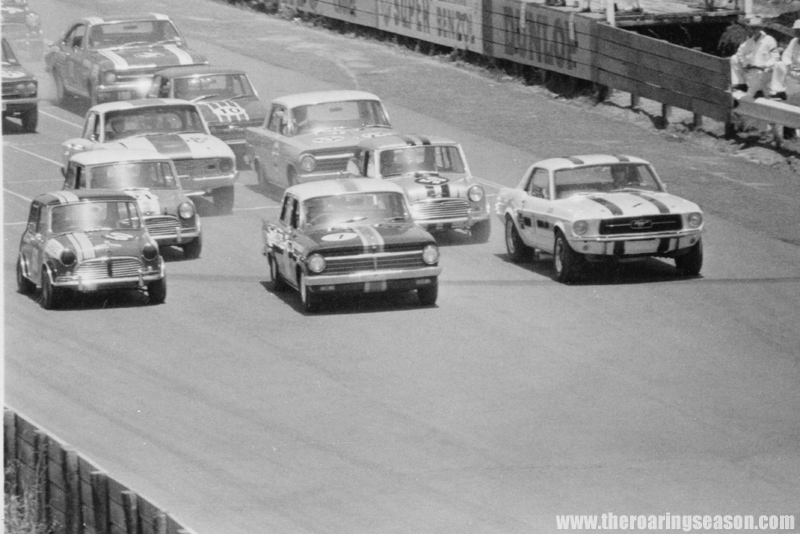
From its inception in 1960, the Australian Touring Car Championship had been decided by a single race. But from 1969, it would become a national series, underlining the rapid growth in popularity of touring car racing in Australia. The 1969 ATCC would be contested over five races, held in five different States; Calder, Bathurst, Mallala, Surfers Paradise, Symmons Plains.
There would also be new competition. Norm Beechey, having raced his ’68 Camaro just four times the previous season, had built up an all-new, Holden Monaro HK GTS327, with strong support from General Motors Australia, who wanted desperately to become the first Australian manufacturer to win the ATCC. Meanwhile, Bob Jane had been to the US, and brought back with him a factory Trans-Am racer, a 1968 Mustang, run by the Shelby team the previous year. Although a state of the art race car, Jane’s Shelby Mustang was still fitted with its Achilles heel that had so stunted the progress of the factory Mustang’s in the 1968 Trans-Am, their troublesome tunnel-port 302ci motors. He was to be joined by Canadian born racer Allan Moffat, driving a second Jane Mustang, but this deal fell through, and rumours began circulating that Moffat had secured one of the latest Kar-Kraft ’69 fastback Mustang’s that were built for that years Trans-Am. The highly talented and adaptable John Harvey would enter selected rounds in Bob Jane’s older, ’67 Mustang. Jim McKeown’s Lotus Cortina was still a threat, despite the big capacity cars, as was Hamilton’s Porsche, and the flying bricks of Manton, Foley, Phil Barnes, and others. Bryan Thomson, who’d been racing Norm Beechey’s 1965 ATCC winning Mustang, had now replaced this with a big block Camaro, while the grids at each round would be bolstered by the local competition.
The points system would be based on that of Formula 1 at the time, rewarding the top six finishers, at: 9, 6, 4, 3, 2, 1. Only the best four results from the five rounds would count towards the championship.
To stay ahead of the competition, Mick Lambert set about putting the Geoghegan Mustang on a diet, and to make the car more drivable, he fit it with a fuel-injection system, in place of the quad-Weber set-up, which had haunted Geoghegan from the outset with unpredictable flat-spots exiting corners. The new fuel-injection system, custom built from a mix of modified Weber down-draught inlet manifold and Lucas componentry, would sit on top of a new 302ci motor.
The 1969 ATCC kicked off at Calder Park (Victoria) on 23 March. Geoghegan went into the new season on full-song, and with a new surface on the Calder layout, he knocked Beechey’s existing lap record right out of the ballpark, being a full 0.9sec faster, at 48.3. Jane was only 0.1sec behind, while Beechey, in the new Monaro, recorded a 48.9 before blowing the motor. Hamilton was next, but well away from those ahead, on 50.0.
-
Administrator

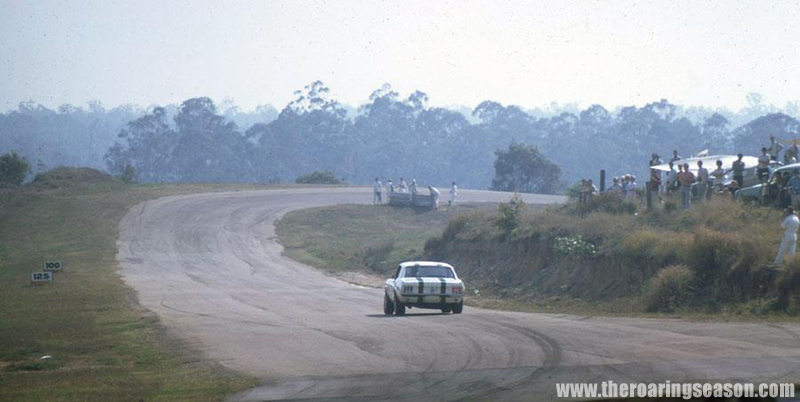
Beechey’s team did an all-night rebuild, and the big blue Monaro charged away to lead briefly as the field drag-raced towards the first turn. Jane slipped back to fifth, behind a fast-starting Hamilton and Thomson’s big block Camaro, while Manton and McKeown tucked in behind. Geoghegan quickly picked off Beechey to lead before the completion of the first lap, while Jane was up to second by lap 4, and began closing in on the white Mustang ahead. One lap later, he was in front, and began drawing away comfortably from Geoghegan, while on lap 7, Beechey blew the replacement motor in the Monaro.
Jane looked comfortable out front, until Geoghegan began to close in again at two-thirds distance, the pair breaking the lap record, recording identical 49.1sec laps. Geoghegan kept applying the pressure, and loomed alongside under brakes at the end of the front straight, until Jane began moving away once more, opening his account with a 5 second win. Hamilton, back in third, was lapped by the two leaders with two laps to run. Manton was next, from Barnes, and Roger Brownrigg, driving another Cooper S.
A big field was entered for Round 2, at Bathurst (which had also just been resurfaced), but it was one light on genuine, race winning contenders. Beechey was gone before the event had barely got started, crashing the Monaro at Forrest Elbow in practice, the damage being enough to put him out. Geoghegan was 6 seconds (!) faster than the second fastest qualifier, Jane, who in turn was 6 seconds faster than the third quickest; Hamilton in the Porsche. Geoghegan had the race won before it even started. With such a huge performance margin, did he cruise to an easy victory? No way! From the drop of the green he put the hammer down; 11 seconds in front after the first lap, 20sec by lap three, 58sec by the end of lap five!
Jane stopped on lap 9 (of 20) with a blown motor, his second engine failure of the weekend, having lost another in a practice session. Still, that was better than the infamous tunnel-port record in the Trans-Am the previous season, as Shelby team manager Lew Spencer was quoted as calling most weekends “six-engine weekends”, where the two team cars each blew an engine in practice, qualifying, and the race!
Geoghegan gunned it all the way to the chequered flag, never letting up, and set a new touring car lap record on the final tour, of 2:29.8. He’d lapped second place man Hamilton after 16 laps! This, on a race track measuring 6.17km in length! Rounding out the points were Barnes, Bob Inglis (Lotus Cortina), Ron Gillard (Cooper S), and Nick Petrilli, driving a Series Production Monaro.
Round 3, at Mallala, saw the arrival in the series of Moffat’s much anticipated Mustang fastback. The Mustang featured a rigid rollcage that tied everything together, at a time when most touring cars in Australia weren’t even fitted with the most basic of roll-hoops; the Geoghegan Mustang included. Moffat also took advantage of CAMS finally relenting on their ruling over the fastback version being accepted now as a sedan, rather than a sports car, as had been the case when Geoghegan applied for permission two years earlier. For its early races, the Moffat Mustang was fitted with a 1968 tunnel-port 302.
-
Administrator

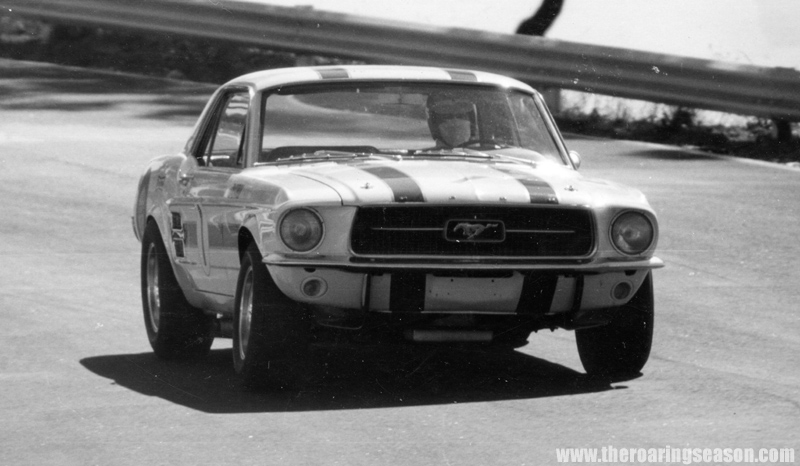
But while Moffat had joined the circus, Beechey was absent….sort of. He’d entered the Mallala event, but blew the 327 in a preliminary race, and although his crew raced to complete an engine swap in time for the ATCC race, they ultimately ran out of time. Harvey, in Jane’s older Mustang, was also entered, as was Terry Allan in his big block Camaro, and John Kay in Beechey’s old Nova. From the field of 15 cars, Jane was fastest, followed by Geoghegan, and Moffat, but at the start it was the white Mustang which scampered out in front, with Moffat and Jane giving chase. Moffat’s challenge lasted two laps, then the motor blew. Then Jane broke at half distance, leaving Geoghegan to take a comfortable victory, over the ever-present Hamilton, albeit, 44sec back down the road. The remaining points were scooped up by Manton, McKeown, Graeme Bishop, and Malcolm Nancarrow, the latter two both Cooper S mounted.
After three rounds, Geoghegan was leading the championship on 24 points, from Hamilton on 16 points, and Jane on 9. It wasn’t close, but the requirement for each driver to drop their lowest points-score would play a pivotal role in the outcome.
Two and a half months after Mallala, the teams gathered in Queensland for the Surfers Paradise round. In between rounds, the big guns met regularly at race tracks throughout New South Wales, Victoria, and Queensland, and both Beechey and Moffat looked to have some momentum going their way, although Moffat suffered several engine failures in between some strong showings. Unfortunately it was another engine failure that kept the red Mustang away from Surfers. Jane was also absent.
Geoghegan took pole, while Beechey and Hamilton both recorded identical times, to be second and third. At race start, Geoghegan powered off into the distance, while Beechey, in second, was comfortably ahead of Hamilton. Then, on lap 8, Geoghegan pitted with a punctured rear tyre, after having hit a dropped exhaust pipe from another car. It took the team 2 laps to fit a replacement. With 16 laps to run, Geoghegan pressed hard, lapping 4sec per lap faster than race leader Beechey, but when the flag dropped after 26 laps, it was the big blue Monaro which took its first ATCC race win, ahead of Hamilton’s bullet-proof Porsche, followed by McKeown, Manton, local racer John French (Alfa), and Geoghegan, who collected just a single point, despite being far and away the fastest in the race.
With one round remaining, it was a two-horse race, as Geoghegan was on 25 points, but Hamilton had closed the gap, and was just three points adrift. However, Geoghegan’s chances looked strong, given he could drop his single Surfers point, giving him 24, while Hamilton would have to drop the 4 points he’d collected at Calder, leaving him well behind on 18. To win the championship, Hamilton needed Geoghegan to fail in the final round at Symmons Plains, with himself winning the race. That appeared a tall order, given the little Porsche had yet to win a round, but with the V8’s proving fragile, anything was possible. And so it nearly proved to be.
-
Administrator

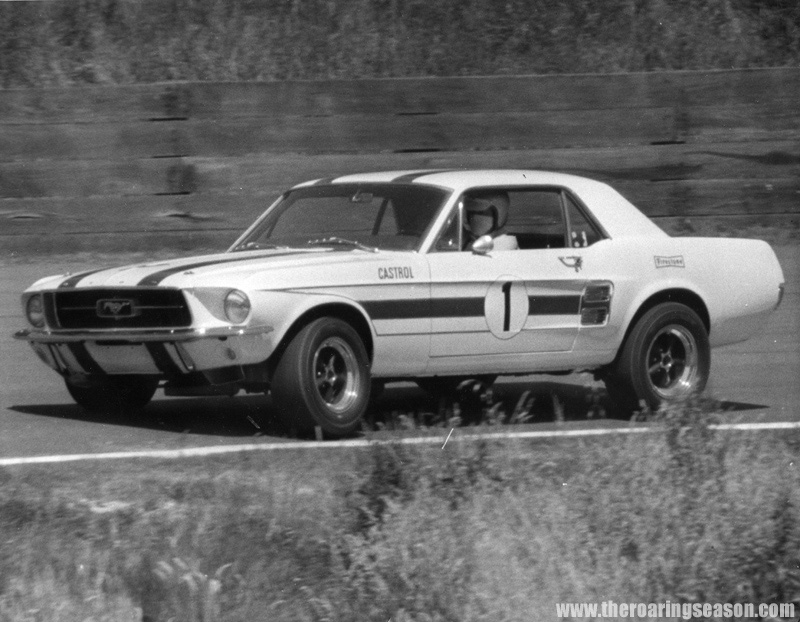
At Symmons, John Harvey was driving Jane’s Mustang, while the boss was overseas. The second Jane Mustang had since been sold to Chris Brauer. Moffat was back, but had more engine issues in practice, requiring a replacement to be flown in overnight so he could make the start. Geoghegan was fastest, from Harvey, Moffat, Beechey, and Hamilton. The Porsche driver had four V8’s standing between him and an ATCC title. With the cars gridded up, and just one minute before the green flag was dropped, that number was reduced to three, when Geoghegan’s Mustang refused to start. With the race launching into action without him, Geoghegan’s crew rocked the Mustang back and forth to free the jammed pinion in the starter motor that had caused the problem, then push-started him into the race. That in itself earned an instant disqualification.
Things continued to improve for Hamilton, as Moffat suffered another engine failure on lap 7, as he chased race leader Harvey. Then Harvey dived into the pits on lap 15 with a puncture. His crew fitted a replacement, sent him out, and a lap later he returned with another. As unlikely as it might have first appeared, Hamilton was on the cusp of winning the championship.
Beechey was out front, drawing away from the Porsche. Then, the Porsche began closing up again. Beechey was in trouble. He’d lost his lower gears, and was having to slip the clutch to keep the car accelerating in top gear. Hamilton loomed, and heading into the last lap, was just a few car lengths behind. Around they swept, one last time, and as they entered the final corner, the little orange Porsche was right up behind the bulky blue Monaro. But the Holden powered away as they ran for the line. Hamilton was second, again. Geoghegan was champion.
From three attempts, Geoghegan’s Mustang GTA had won three Australian Touring Car Championships. And its career with Geoghegan should have concluded midway through the 1970 season, as he made the smooth transition across to his new ride. The Australian Touring Car Championship was gaining mass appeal throughout Australia. Although the annual Bathurst endurance event, held for factory standard Series Production cars, was the most significant annual touring car event in Australia, the ATCC, for the faster and more exciting Improved Production cars enjoyed greater fan and media support than every other Series Production event. But the ATCC was being dominated by American machinery, cars which weren’t available to new car buyers in Australia. General Motors Holden had entered the battle field in 1969, with Norm Beechey’s brash HK Monaro GTS327, which posted race wins in the last two rounds of the championship. Holden were back for 1970, bigger and better, with Beechey’s new monster, his bright yellow HT GTS350 Monaro. And Ford Australia were now wanting to wade in, with their own locally produced models.
-
Administrator

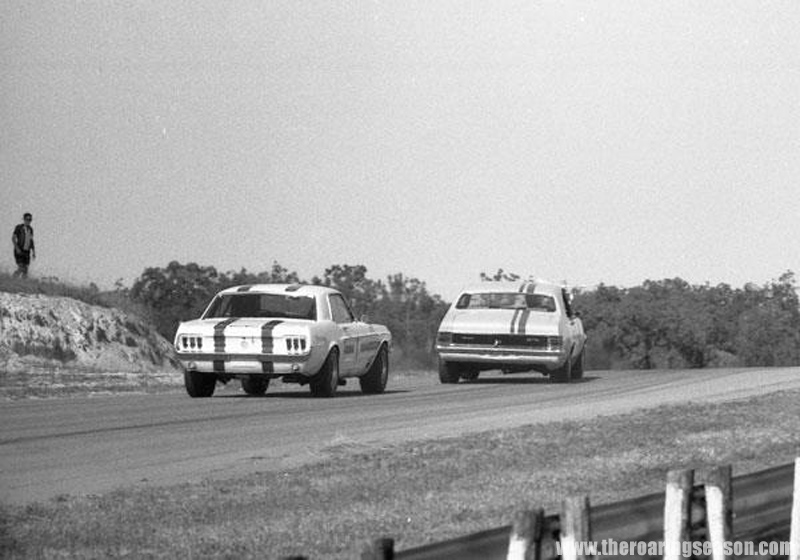
The ATCC had yet to be won by an Australian manufacturer. Both Ford and Holden wanted to be the first to achieve this. Holden had momentum, and although Ford had yet to build an Improved Production Falcon, the model shared many components with the Mustang, so they weren’t starting entirely from scratch. CAMS had tweaked the Improved Production rules for 1970, allowing greater freedoms in many areas, including suspension and brakes, and wheel widths. Up to and including 1969, maximum wheel widths allowed were 8”. From 1970, this would increase to 10”, allowing the bigger Aussie cars a larger footprint to take on their American rivals.
Mick Lambert set about updating the Geoghegan Mustang once more, making improvements to embrace the new freedoms. Wider 10” Minilites were fitted, with the wheel openings being flared out. A front spoiler, incorporating ducts for the front brakes was fabricated from aluminium, while, for the first time, a rollcage was installed. Meanwhile, at Ford Special Vehicles highly secretive workshops, a pair of XW ‘Super Falcon’ Improved Production cars were being constructed for both Geoghegan and Allan Moffat to step into once they’d been completed, and fully tested. This was expected to be around mid-season. These machines, each of which had been allocated a budget of A$80,000, featured fuel-injected 351 motors, and numerous lightweight hand-built components.
The 1970 ATCC expanded to seven rounds: Calder, Bathurst, Sandown, Mallala, Warwick Farm, Lakeside, Symmons Plains. The main contenders were Moffat in his Mustang, Beechey in his new HT Monaro (said to have 530hp), the Geoghegan and Jane Mustang’s, the new Porsche 911’s of Foley and McKeown, while others, such as Chris Brauer in Bob Jane’s older Mustang, Bryan Thomson in his big block 427 Camaro (said to have closer to 600hp!), plus the smaller capacity cars were considered more an outside chance.
The championship kicked off at Calder on 22 March, 1970, and qualifying was held in wet conditions, where Moffat took pole, and led the charge at the drop of the green, followed by Geoghegan , Jane, and Foley. Meanwhile, Beechey, who started well down the field, had thundered up to fifth place by the time the field reached the first turn. And he didn’t stop there. One by one the big yellow Monaro simply powered past Foley, Jane, Geoghegan, and, finally, Moffat, to take the lead,
Beechey drew away, until he clipped a back-marker while working through lapped traffic, and stopped on the side of the track to pull some bent bodywork off a tyre. Then, Geoghegan was out when an axle snapped, and he lost a wheel. Jane had made a pit stop, leaving Moffat out front, ahead of the Foley and McKeown Porsche’s, until the recovering Beechey simply powered back to the lead once more. However, he pitted to replace a damaged tyre, and dropped out of the points, leaving Moffat to take the win, from Foley, McKeown, Jane, Bob Brown (Cooper S), and Bill Fanning (ex-Moffat Lotus Cortina).
-
Administrator

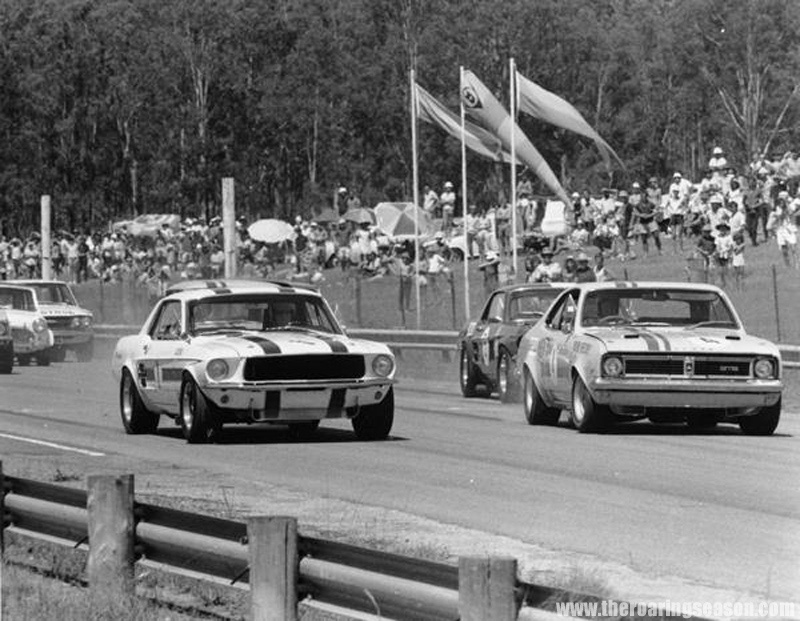
Next up was Bathurst, another power track, and although the big Beechey Monaro looked uncomfortable on the corners, nothing could get close on the straights. Geoghegan, who’d so dominated here the year before, once again shot out to an early lead after briefly following Beechey, while Moffat was close, until he dropped out with a plug problem. This left Jane in second, trying hard to hold off Beechey. But in trying too hard to make up the horsepower deficit, Jane spun, leaving Beechey free to charge off after Geoghegan. The white Mustang, however, was also in trouble, as Geoghegan, who was contracted to Firestone, couldn’t get rubber in the sizes he needed, so he was racing on worn tyres.
Beechey caught up, went past, and went on to win, while Geoghegan held on for second. Jane recovered for third, ahead of McKeown and Foley, while Chris Brauer notched up a good sixth in his Mustang.
On to Sandown, another power track, and again Beechey was dominant. He led from start to finish, and broke the lap record in the process. Geoghegan recorded another second place, to move forward in points, while Moffat was next, followed by Jane, Foley, and the twin-cam Escort of Graham Ritter. After three rounds, Beechey was ahead on points, with 18, from Moffat on 13, and Geoghegan on 12.
Mallala was next, a circuit where handling was as important as brute force, and in a wet qualifying session, Foley took pole. On race morning, it was still raining, and both Moffat and McKeown started the race on wets. Moffat charged off to build a huge lead, until it stopped raining. As the track dried, Beechey worked his way forward, moving up to second, and was closing on Moffat before the Monaro began to slow with a slipping clutch. Both Foley and Geoghegan closed in, before Moffat lost the clutch in his Mustang. Foley, whose handling had suddenly gone awry, shot into the pits, to find a roll-bar bracket had broken. However, he charged off again, to finish third, behind Beechey, while Geoghegan finally took his first ATCC win of the season. The points were rounded out by Bill Brown, having his first run in the Scuderia Veloce Porsche 911, from Jane, and Peter Manton’s Cooper S.
With three rounds remaining, Geoghegan had closed the points gap to just 3 (24 to 21), while Foley was next, but well behind on 14. However, the final three rounds would not produce a single point for Geoghegan.
At Warwick Farm, McKeown surprised everyone by taking a dominant victory, and setting fastest lap along the way. However, the race was relieved of several top contenders on the opening lap, when Moffat spun at the first corner, and was t-boned by Geoghegan (who was out on the spot), while Foley was hit by Brown in among the confusion. Beechey ran second for a time, until he lost a rear wheel, and 6 valuable points. So Jane finished second, ahead of Brown, Phil Barnes, Brauer, and John Humphrey (Cooper S). At that, McKeown had suddenly leapt up to third in the points, on 19, while neither Beechey nor Geoghegan had progressed.
-
Administrator

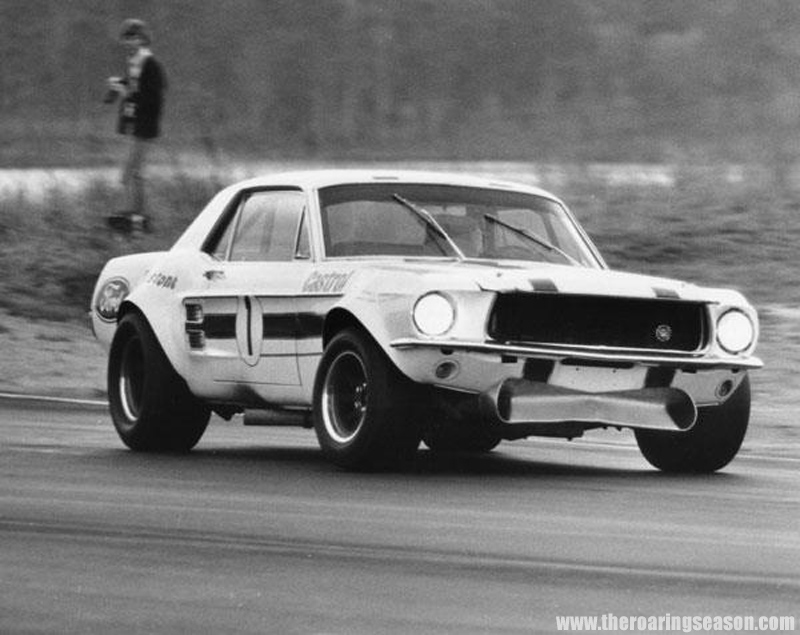
At Lakeside, Moffat took pole from Geoghegan, but it was the white Mustang which powered to turn one in front, ahead of Beechey. Just behind, several cars tangled, and Brauer was spat off the track, where his Mustang wrapped itself around the trackside Armco edging, the drivers side taking the full brunt. Brauer sustained internal injuries, the Mustang was too heavily damaged to repair, and neither ever raced again. The incident happened in the exact spot where, in the previous sports car race, Glyn Scott and Ivan Tighe came together in a vicious shunt, and where Scott would succumb from his injuries.
Beechey won this race after Geoghegan dropped out with a rare engine failure. Moffat also retired with engine failure, after pitting for a black flagged due to passing under yellows. Brown was having a good race, moving to second, but made a pit stop late on. Beechey took the win, and the 9 points, moving him to an unbeatable 33, with one round remaining. Jane was second, from McKeown, Brown, John French (Cooper S), and a young local bloke called Dick Johnson, driving a Torana, who collected his first ever ATCC point, with sixth.
Geoghegan decided to miss to the final round at Symmons Plains. Moffat had run a highly publicised shake-down in his new Super Falcon at Calder Park in August, apparently with a Series Production motor fitted, just to give journo’s and photographers something to see. Moffat planned to debut the car at the Symmons ATCC race, and ran four smouldering laps (now with correct fuel-injected 351 installed) before the motor blew. In that time, he’d done enough to claim pole, but would be a non-starter for the race.
In wet conditions, McKeown took his second win of the season, in dominant fashion, heading home Bryan Thomson in the hugely powerful big block Camaro by a full lap, followed by Jane, local driver Robin Pare (Mustang), Tony Calvert in another Mustang, and Peter Manton. In the end, Geoghegan finished the championship in fourth. But surely, 1971 promised much more, as his new Super Falcon would be ready to win, and the old Mustang, now four seasons old and the only touring car from that 1967 season still running at the front, could be moved on.
In fact, the old fighter would be pushed back into the ring for yet another season, as the highly complex and troublesome Super Falcon’s, the budgets for which had now blown out to around A$120,000 each, were barely as quick as either Moffat or Geoghegan’s Mustang’s, and were certainly nowhere near as reliable. The 1971 ATCC once again contained 7 rounds, opening where it had concluded the year before, at Symmons Plains. From there, was Calder, Sandown, Surfers Paradise, Mallala, Warwick Farm, and Oran Park.
-
Administrator

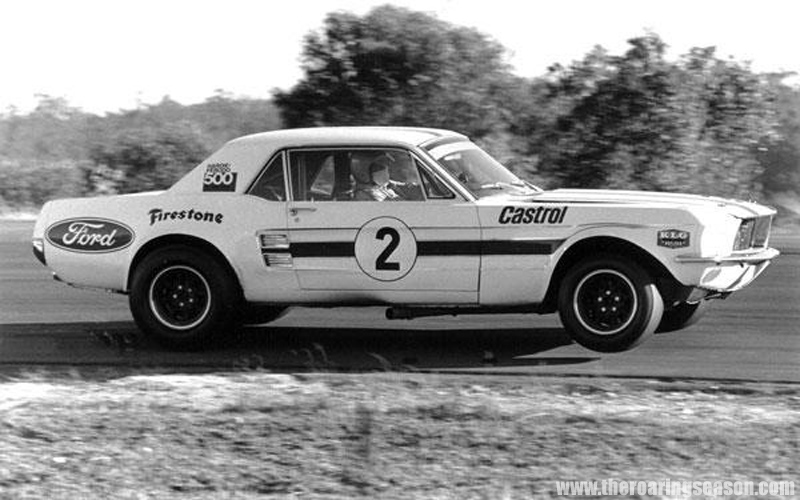
Bob Jane had a newly constructed 1969 Camaro ZL1, complete with alloy big block 427, ready to win another ATCC title. But otherwise, much of the 1971 crowd was that of 1970, barring the rare occasions a Super Falcon made the start. Geoghegan ran the Mustang at a wet Symmons Plains, finishing third, 40 seconds behind second placed Jane, while Moffat (in his Mustang) took victory. Geoghegan’s good fortune was due to Beechey’s misfortune, when the Monaro blew its engine late in the race, while running second.
At Calder, Geoghegan again chose to leave the Super Falcon at home, although Moffat took his, as well as his Mustang. He drove both in qualifying, but the Falcon gave trouble, so he jumped into the Mustang, and took pole. Jane was next, followed by McKeown, Beechey, Geoghegan, and Thomson. Jane was out on lap one with clutch trouble, while Moffat led, until he slowed, and dropped back down the order, eventually losing the motor. This left Beechey up front to take what would prove to be his final ATCC race win, from Geoghegan, McKeown, John Rushford (Escort twin-cam), Trevor Meehan (Cooper S), and Andrew McComb (Cooper S).
At Sandown, Geoghegan and Moffat took both their Falcon’s and Mustang’s, but both ultimately settled on racing their Mustang’s. Jane and Moffat dived into an intense dual for the lead, pulling away comfortably from Geoghegan, until Jane’s Camaro jammed in fourth gear, and Moffat stormed away. Then, with 5 laps to run, Moffat was shown the black flag, as something appeared to be hanging down beneath the car. He continued to circulate, however, as the laps wound down. With one tour remaining, and with a 50sec lead, he dived into the pits, a crew member peered under the car, and found a transmission oil cooler line had come undone. At that, officials sent him on his way, considering the oil cooler line not to contain any risk. He crossed the line first. Jane struggled on to finish second, only just, with Geoghegan third, from McKeown, Graham Ritter, and Colin Bond in a Series Production Torana.
Then the drama’s began. Moffat was excluded from the results for ignoring the black flag. Everyone else was moved up one spot. And so, even though teams were still to drop their lowest points score, after three rounds, Geoghegan, with his Mustang now in its fifth season, was leading the championship, on 16 points, from Jane on 15, and McKeown on 11.
At Surfers Paradise, Moffat again took both his Mustang and Super Falcon, while Geoghegan only took the Mustang. Moffat tested both cars, but opted for the Mustang, again, in fact, taking pole position. This time, however, the Moffat Super Falcon did race, in the hands of John French. In the race, Moffat exploded off the line, charged off into the distance, and nobody saw which way he went. He broke the lap record, and won by 35sec. Jane finished a lonely second, while Geoghegan and French battled throughout. While the Super Falcon had the straight line boogie, the old Mustang was better everywhere else, and Geoghegan came home third, with French right behind. McKeown was next, ahead of Brian Foley in his beautiful new Alfa GTAM.
-
Administrator

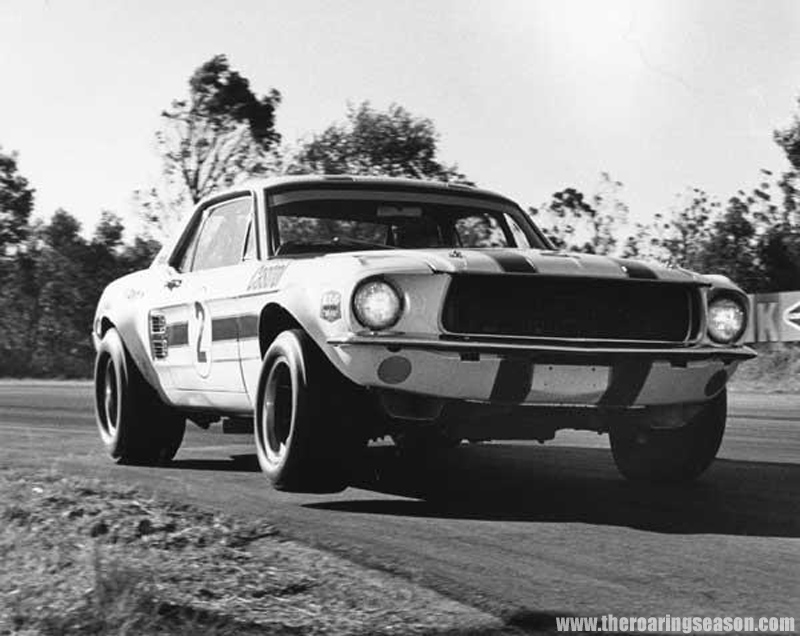
At Mallala, Moffat and Geoghegan again raced their Mustang’s. And, amazingly, Geoghegan nearly won! Jane took pole, and led throughout, challenged initially by Moffat, who spun back down to fourth, then later by Geoghegan, who loomed up alongside several times under brakes, only to have the big block Camaro leave him behind under acceleration. In the end, Jane won, by just 3/10ths sec, from Geoghegan, while Moffat recovered to third, from McKeown, Foley, and Graham Bishop in a Cooper S.
Round 6 was scheduled to run at Warwick Farm. However, the track licence had been withheld until safety fencing was upgraded, so Round 6 was moved to Lakeside. Here, both the Moffat and Geoghegan Mustang’s and Super Falcon’s were hauled to the track, but again both drivers opted for their Mustang’s after testing both. Again, John French was on hand to wrestle with one of the Super Falcon’s, this time Geoghegan’s car. Moffat took pole, won the start, claimed fastest lap, and won handily, from Geoghegan, while Jane was third, having run second for much of the race until a failing wheel-bearing slowed him. Beechey was next, from French, and McKeown.
With one round remaining, the championship was incredibly tight. Jane was leading on 34 points, Geoghegan was on 32, and Moffat was on 31. However, Geoghegan had finished every race, so would have to drop his lowest point score, being the 4 points he collected at Mallala. Both Jane and Moffat had failed to score in at least one round, so their points tally would not be affected. But any of these three drivers could emerge from Oran Park as the 1971 Australian Touring Car Champion. That Geoghegan’s old Mustang was still in the hunt spoke volumes of his ability as a driver, and of Mick Lambert’s meticulous maintenance.
As it happened, Geoghegan would not claim a sixth ATCC title at Oran Park, on August 8. The race became a showdown between Jane and Moffat. With a championship to win, neither Geoghegan nor Moffat needed the distraction of battling with their Super Falcon’s in practice, only to inevitably race their Mustang’s, and both arrived at Oran Park only with their Mustang’s in tow. Moffat blew everyone away in qualifying, lapping a full 1.2sec quicker than Jane, and at the drop of the green, he blazed off the line, darted through the first turn, and was gone. Jane, meanwhile, missed a gear off the line, allowing Geoghegan up to second. There he stayed, for three laps, as Moffat scorched away, building a healthy buffer, until Jane powered past for second.
-
Administrator

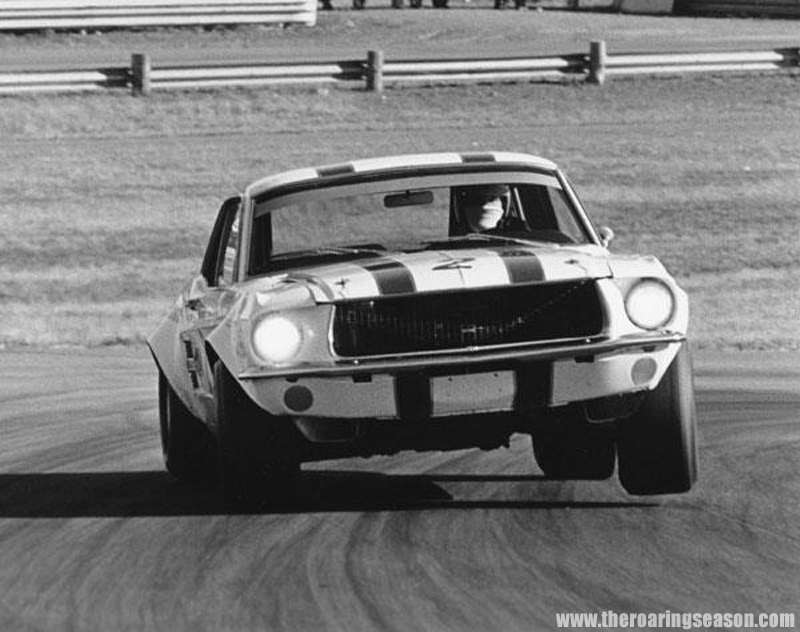
Slowly, Jane closed the gap on Moffat, until suddenly he thundered across the start/finish line in front. Moffat had stopped, as his gearbox jammed in second gear. He freed it, took off again, but now Geoghegan had moved back to second. Moffat quickly caught the white Mustang, and ducked and dived for several laps looking for a way past, until finally getting through, and bouncing off Geoghegan as he went by. Then he set off after Jane, hauling him in, and by the time the pair entered the last corner of the last lap, was right behind. But he ran out of time. Jane was champion. In the end, Geoghegan finished the championship in third. However, the old white Mustang, now with five full seasons of racing behind it, was the only car to score points in every round of the 1971 ATCC, and it finished no lower than third in any of the seven races.
For Geoghegan, this was the last ATCC race he ran in his old Mustang. Moving forward, he decided the Super Falcon had potential, and although Moffat had given up on his one, Geoghegan set about a hugely expensive development program to bring the troublesome machine fully up to speed.
Late in the year, Geoghegan shipped the Mustang to New Zealand, where, along with Moffat’s Mustang, he took on a depleted field of Kiwi sedans at Pukekohe on 14 November, 1971, which was missing front runners Paul Fahey and Dennis Marwood. Oddly enough, both had shipped their cars to Australia to race! Main challenger to the two Aussie Mustang’s was the Camaro of Rod Coppins, who was leading the opening encounter, before a blown head gasket put him out for the rest of the event. Moffat narrowly won both scratch races from Geoghegan, while local Mustang driver John Riley won the handicap race from Geoghegan.
Both Moffat and Geoghegan left their Mustang’s in New Zealand, for the big Bay Park Christmas event, on 28 December, where they were also joined by Brian Foley’s Alfa. Another international was American Ron Grable, in a Trans-Am Firebird. Both Fahey and Marwood were back, Fahey in his Mustang, Marwood in his Camaro, and Red Dawson debuted his beautiful new 2nd generation Camaro at this event. Moffat took pole, followed by Foley, and Geoghegan, around the tight Bay Park layout. Moffat also won the opening encounter, after Dawson sprung to an early lead, before both Moffat and Geoghegan worked their way past, finishing in this order, with Dawson third. In race 2, Moffat again won, with Geoghegan again finishing second, with Dawson close behind.
-
Administrator

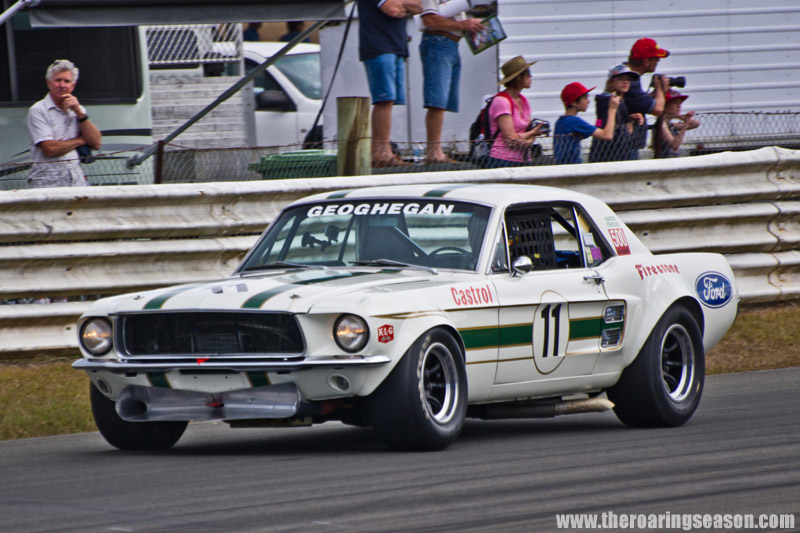
Australian Clive Green had recently purchased the incredible Geoghegan Mustang GTA, and he was on hand at Bay Park, to watch big Pete run his last ever race in the car. Fittingly, just as he won with the Mustang on debut back on 30 July, 1967, so he book-ended his association with the car, by winning his last ever race at the wheel of the only machine ever to win three Australian Touring Car Championships. The white Mustang sprinted away from the start to lead Moffat, who, typically, applied the pressure, until breaking through on lap 3. However, Geoghegan stayed close, and saw his opportunity on the 5th lap, leaping back to the front, where he stayed to the finish.
With Geoghegan and the Mustang going their separate ways, Clive Green ran the car in the final year of Improved Production, in 1972, picking up a pair of 5th placings at Calder and Sandown. Green had bought the Mustang in partnership with Bob Gill, and Gill bought out Green’s share at the end of 1972, and began racing the Mustang as a Sports Sedan, when the Improved Production rules were dropped at the conclusion of that season, from 1973 right through until 1986, before it was retired. A few years later he painted the Mustang up in Geoghegan’s Castrol colours for a Golden Jubilee event at Oran Park, and Geoghegan was reunited with the old car at this event, where he ran a few demonstration laps.
Gill then put the Mustang into storage, before Ross Donnelly bought it in 2001, and had it restored back to its 1971 Improved Production guise, so he could race it in historic Group N touring car competition. Eventually, Donnelly sold the Mustang, and purchased one of the two Dick Johnson Racing Group A Mustang’s, which had been in New Zealand since 1986. The Geoghegan GTA was bought by Des Wall at a Shannons auction in 2005, and Wall raced the car regularly at historic events. His collection of historic Improved Production cars was bolstered when he also purchased and had restored the Bob Jane HQ Monaro.
Sadly, Des Wall passed away in 2012, although the Geoghegan Mustang is still owned by the Wall family, and Des’ son David, a V8 Supercar racer, brings the old Mustang out on occasion to either race or demonstrate.
The beautiful photos featured in this article have been supplied by Dale Harvey, Graham Ruckert, and Tony Growden. Dale and Graham have supplied the period photos.
-
Semi-Pro Racer

Steve,
That is a hell of a story - your ability with the keyboard is amazing. Long may it last
-
-
Steve, for a guy who was still in nappies when all this took place, you need to be commended for your investigative research and your ability to put it in writing! You`re a bloody walking encyclopedia!
-
Administrator

Hey thanks guys, really glad you enjoyed it.
-
Excellent read all right, nicely brought to life.
 Posting Permissions
Posting Permissions
- You may not post new threads
- You may not post replies
- You may not post attachments
- You may not edit your posts
-
Forum Rules




 Reply With Quote
Reply With Quote
